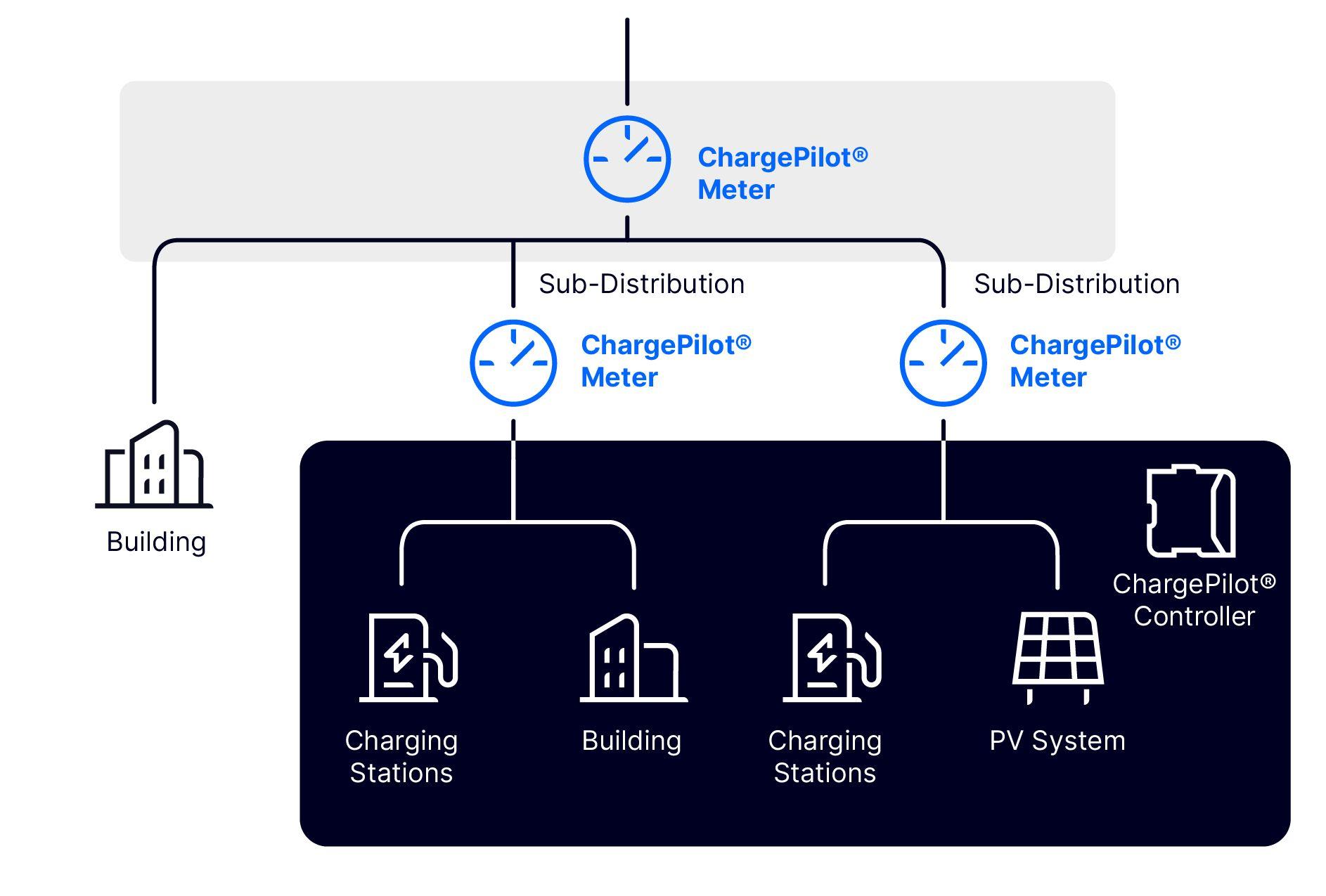The future of charging starts now

ChargePilot® offers innovative, fail-safe load management that meets custom requirements.
Ensuring sufficient power supply is often the greatest obstacle when establishing charging infrastructure. ChargePilot® not only saves on high investment costs for grid expansion but also prevents expensive peak loads and high ongoing energy costs. The available power is intelligently distributed amongst the charging stations, staying within specified limits while considering local conditions, vehicle charging status, and prioritization.
Basis
Static or dynamic
Electric vehicles can be charged with either a fixed maximum load limit (static) or a flexible limit that dynamically adjusts in real-time to account for other consumers.
Static Load Management
A maximum power limit is set for the entire charging infrastructure. ChargePilot® intelligently distributes the available power among the connected vehicles but does not adjust it to other factors such as building load. Therefore, this solution is suitable for locations with minimal consumption fluctuations.
Dynamic Load Management
To make the best use of the available power connection, ChargePilot® dynamically adjusts the total charging power for the charging infrastructure based on real-time site load. The second-by-second measurement using a locally installed power meter enables continuous optimization for higher efficiency.

Mastering complex distribution structures
Even when charging stations are connected to multiple sub-distributions with additional consumers and generators, a single ChargePilot® controller manages the power intelligently. This approach reduces installation costs and enables smart load management.
Advanced Optimization
Smart add-ons for maximum efficiency
To ensure priority charging for certain vehicles, any RFIDs and charging points can be easily set accordingly.
Smart charging plans are created that consider schedules and target state of charge to ensure smooth operations.
Enables control of charging power according to the distribution grid operator's specifications, thereby complying with §14a EnWG.
Efficiently utilizes available solar energy to increase self-consumption to lower overall operational expenses.
Incorporates dynamic energy prices and automatically shifts vehicle charging to the most cost-effective times.
Optimization of average peak power in 15-minute intervals for increased efficiency and optimal grid utilization.

Vision
Saves money today, makes a profit tomorrow
Electric vehicles are integrated into the power grid to serve as temporary energy storage units. During periods of high grid demand, the stored energy in the battery is profitably fed back into the grid using Vehicle-to-Grid (V2G). A win-win for everyone.

ChargePilot increases the use of locally produced solar energy, significantly reducing costs and enhancing the sustainability of charging infrastructure.

ChargePilot® intelligently leverages dynamic electricity tariffs for vehicle charging, enabling V1G for fleets of any size.

ChargePilot® allocates charging power across multiple sub-distributions while taking additional consumers and generators into account.